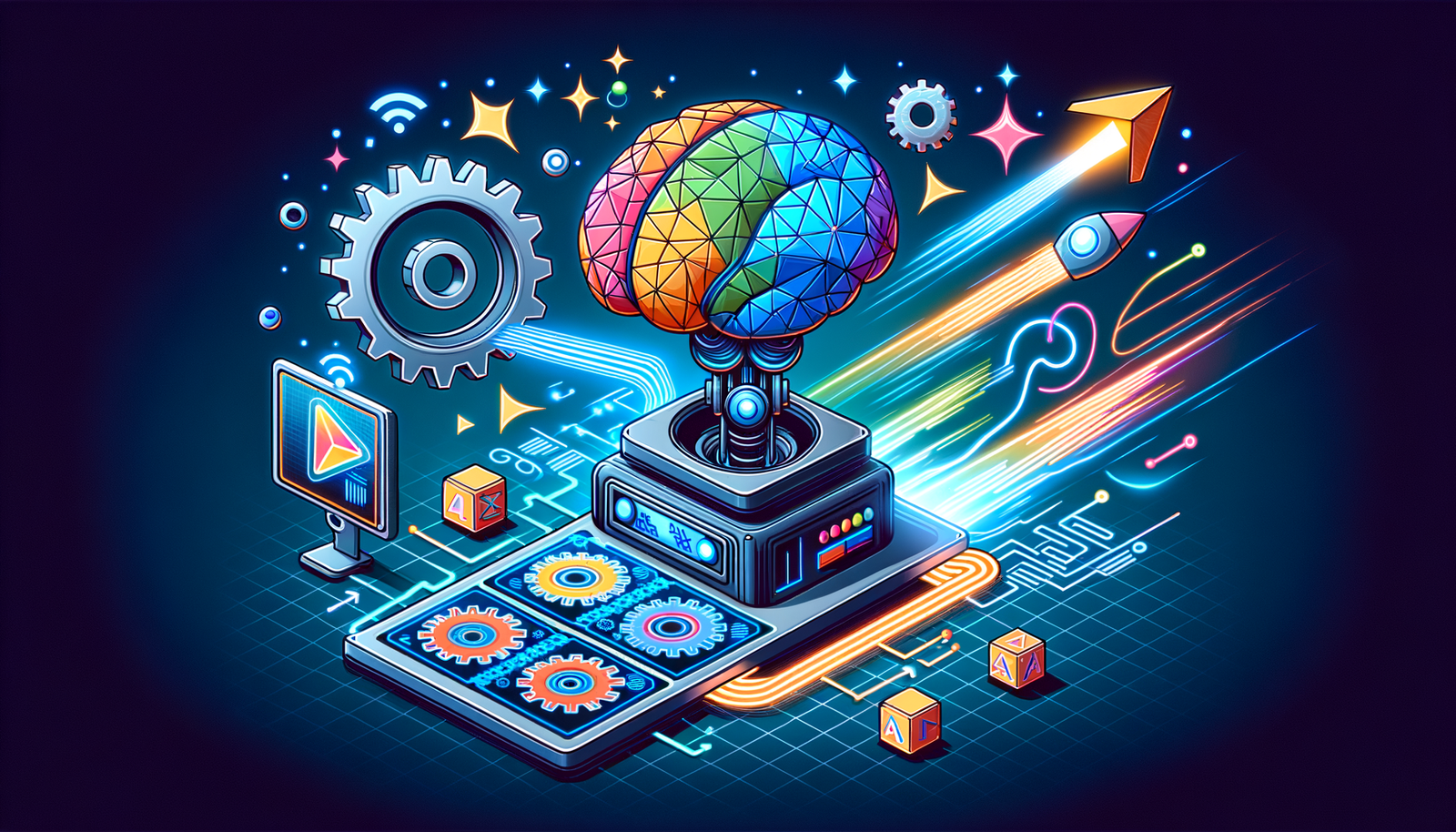Your Cart is Empty
Customer Testimonials
-
"Great customer service. The folks at Novedge were super helpful in navigating a somewhat complicated order including software upgrades and serial numbers in various stages of inactivity. They were friendly and helpful throughout the process.."
Ruben Ruckmark
"Quick & very helpful. We have been using Novedge for years and are very happy with their quick service when we need to make a purchase and excellent support resolving any issues."
Will Woodson
"Scott is the best. He reminds me about subscriptions dates, guides me in the correct direction for updates. He always responds promptly to me. He is literally the reason I continue to work with Novedge and will do so in the future."
Edward Mchugh
"Calvin Lok is “the man”. After my purchase of Sketchup 2021, he called me and provided step-by-step instructions to ease me through difficulties I was having with the setup of my new software."
Mike Borzage
AI-Driven Design: Transforming CAD with Machine Learning for Enhanced Creativity and Efficiency
November 19, 2024 5 min read


Introduction
In the rapidly evolving landscape of design, AI-driven methodologies are revolutionizing the way professionals approach creative problem-solving. The integration of machine learning into CAD (Computer-Aided Design) software represents a significant shift in how designers conceptualize, develop, and execute projects across various disciplines. From architecture and engineering to product development and beyond, the impact of artificial intelligence is profound, enabling more efficient processes, enhanced creativity, and innovative solutions. This transformation is not merely a technological advancement but a fundamental change that redefines modern design processes. By harnessing the capabilities of AI, designers can tackle complex challenges with unprecedented precision and insight, ushering in a new era of design that is both intelligent and intuitive.
Understanding Machine Learning in Design Software
Machine learning, a subset of artificial intelligence, empowers computers to learn from data and improve their performance over time without being explicitly programmed for each task. In the realm of design software, this means that CAD systems can analyze vast datasets to identify patterns, make predictions, and provide intelligent recommendations. Understanding how machine learning integrates with design requires an exploration of the types of algorithms used and their relevance to design processes. By leveraging data-driven decision-making, designers can create more optimized and innovative designs, tailored to specific needs and constraints. This synergy between machine learning and design software enhances the designer's capabilities, allowing for more informed choices and efficient workflows.
Types of Algorithms Used in Design Software
The implementation of machine learning in design software utilizes various algorithms, each contributing uniquely to the design process:
- Supervised Learning: This involves training models on labeled datasets where the desired output is known. In design, supervised learning can help in tasks like image recognition, classification of design elements, and predicting outcomes based on historical data.
- Unsupervised Learning: Without labeled outputs, unsupervised learning discovers hidden patterns or intrinsic structures within data. This is valuable for clustering similar design components, uncovering relationships between design variables, and generating insights from large, complex datasets.
- Reinforcement Learning: Models learn optimal actions through trial and error interactions with an environment, receiving feedback in the form of rewards or penalties. In CAD software, reinforcement learning can optimize design parameters by exploring various configurations and learning from the results to enhance performance.
Data-Driven Decision-Making in Design
Data-driven decision-making is becoming increasingly central to modern design practices. By utilizing machine learning, designers can make informed choices based on statistical evidence and predictive analytics rather than intuition alone. This approach allows for the consideration of a multitude of variables simultaneously, such as material properties, user behavior, environmental factors, and market trends. For instance, in product design, analyzing user interaction data can lead to improvements in ergonomics and usability. In architecture, simulating energy consumption patterns helps in creating more sustainable buildings. Machine learning algorithms process these vast datasets to uncover insights that would be difficult or impossible to detect manually. By integrating these insights into the design process, designers can optimize performance, reduce costs, and enhance the overall quality and relevance of their work. This shift towards data-driven methodologies represents a significant advancement in the ability to create designs that are not only aesthetically pleasing but also highly functional and aligned with user needs.
Examples of AI Applications in Design
AI applications in design are diverse and continually expanding as technology advances:
- Pattern Recognition: Machine learning algorithms analyze design data to identify patterns and correlations. This is useful in detecting material defects, predicting structural weaknesses, or optimizing design elements based on historical success.
- Predictive Analytics: By forecasting trends and outcomes, predictive analytics helps designers anticipate user needs and market demands. This allows for proactive adjustments in the design process, reducing time to market and increasing the likelihood of success.
- Automation: AI automates repetitive and time-consuming tasks such as drafting, rendering, and data entry. This increases efficiency and allows designers to focus on more complex and creative aspects of their projects.
Benefits of Integrating Machine Learning into CAD Systems
The integration of machine learning into CAD systems offers several significant benefits that transform the design landscape: Improved Efficiency: Automation of routine tasks and rapid processing of complex calculations reduce the time required for design iterations, accelerating project timelines. Enhanced Creative Potential: AI tools generate new design options and alternatives, inspiring designers to explore innovative solutions that may not have been evident through traditional methods. Error Reduction: Advanced analytics detect potential issues early in the design process, minimizing the risk of costly mistakes and ensuring higher quality outcomes. Customization: Machine learning enables personalized user experiences by adapting to individual preferences and workflows, making the design process more intuitive and user-friendly. These benefits lead to a more agile and responsive design process, where designers can focus on innovation while relying on AI to handle complex or repetitive tasks. The result is a synergy between human creativity and machine precision, producing designs that are both imaginative and technically sound.
Real-World Applications of AI in CAD Software
In practical terms, AI's integration into CAD software manifests in various ways across different industries. In architecture, AI assists in optimizing building designs by analyzing spatial configurations, structural integrity, and environmental sustainability. Designers can simulate how a building will perform under different conditions, leading to more energy-efficient and innovative structures. In product design, machine learning accelerates the prototyping phase by predicting material behavior and performance outcomes, allowing for rapid iteration and refinement. Engineering fields benefit from AI-enhanced structural analysis, where complex calculations are performed quickly and accurately, identifying potential issues before they become costly problems. Additionally, CAD software equipped with AI capabilities can learn from previous projects, adapting to the specific style or preferences of the designer. This personalization enhances workflow efficiency and fosters a more intuitive design experience. These applications demonstrate how AI is not just an addition to existing tools but a transformative force that reshapes the capabilities and possibilities within the design profession.
The Future of AI-Driven Design
Looking ahead, the implications of AI technologies for CAD software development are profound. Emerging trends point towards increased customization and user-centric design processes, where software adapts to the unique needs and preferences of each designer. The potential for augmented creativity through AI-generated suggestions means that designers will have access to a broader spectrum of ideas and solutions, pushing the boundaries of innovation. However, these advancements come with challenges and ethical considerations. Issues of data privacy arise as AI systems rely on vast amounts of user and project data to function effectively. Ensuring that algorithms do not perpetuate bias is crucial, as flawed data can lead to skewed results that impact design fairness and inclusivity. The role of human designers also evolves in this context; while AI can handle many technical aspects, the need for human intuition, empathy, and creative vision remains irreplaceable. Balancing the strengths of AI with the unique capabilities of human designers will be essential in navigating this new landscape.
Conclusion
The fusion of artificial intelligence and design through AI-driven CAD software represents a significant leap forward in how we approach the creation of products, structures, and solutions. This integration offers transformative potential, enabling designers to work more efficiently, creatively, and effectively. As the design community continues to adapt and learn, embracing these technologies will be key to staying at the forefront of innovation. Ultimately, the collaboration between human creativity and machine intelligence opens up new horizons in design, where the limitations of the past give way to endless possibilities for the future. By fostering this partnership, designers can shape a world that is more responsive, sustainable, and attuned to the complexities of contemporary life.
Also in Design News

Cinema 4D Tip: Tiered Cinema 4D Render Presets with Tokenized Outputs
December 16, 2025 2 min read
Read More
Revit Tip: Duct Routing Best Practices and Fabrication Workflow
December 16, 2025 2 min read
Read More
ZBrush Tip: GPU-Optimized ZBrush and Redshift Workflow for High-Poly Scenes
December 16, 2025 2 min read
Read MoreSubscribe
Sign up to get the latest on sales, new releases and more …


